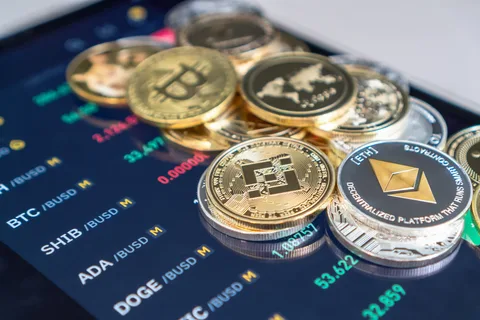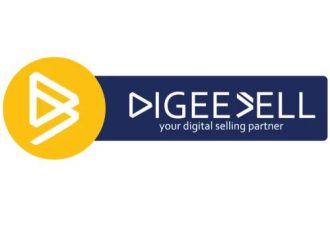The digital currency landscape has undergone a remarkable transformation over the past decade. As technology continues to evolve, so does the way we perceive and use money. Digital currencies, which include cryptocurrencies like Bitcoin and Ethereum, as well as central bank digital currencies (CBDCs), are no longer fringe concepts but are becoming integral parts of
The digital currency landscape has undergone a remarkable transformation over the past decade. As technology continues to evolve, so does the way we perceive and use money. Digital currencies, which include cryptocurrencies like Bitcoin and Ethereum, as well as central bank digital currencies (CBDCs), are no longer fringe concepts but are becoming integral parts of the global financial system. This article delves into the current trends in digital currency adoption, focusing on key developments and their implications.
The Rise of Cryptocurrencies

Image by : Yandex
Bitcoin: The Pioneer
Bitcoin, introduced in 2009 by an anonymous entity known as Satoshi Nakamoto, was the first cryptocurrency and remains the most well-known. Its decentralized nature and limited supply have made it a popular store of value, often referred to as “digital gold.” Over the years, Bitcoin has seen significant price volatility, but its adoption has continued to grow. Major companies like Tesla, Square, and MicroStrategy have invested in Bitcoin, signaling institutional acceptance.
Ethereum and Smart Contracts
While Bitcoin paved the way, Ethereum has expanded the possibilities of what digital currencies can achieve. Launched in 2015, Ethereum introduced the concept of smart contracts, self-executing contracts with the terms directly written into code. This innovation has led to the development of decentralized applications (dApps) and the burgeoning field of decentralized finance (DeFi). Ethereum’s blockchain is now a hub for various financial services, from lending and borrowing to trading and insurance.
Altcoins and Diversification
Beyond Bitcoin and Ethereum, thousands of alternative cryptocurrencies, or altcoins, have emerged. These digital assets serve various purposes, from privacy-focused coins like Monero to utility tokens like Chainlink. The diversification of digital currencies provides users with more options and fosters innovation in the blockchain space.
Central Bank Digital Currencies (CBDCs)

Image by : Yandex
The Concept of CBDCs
Central banks worldwide are exploring the issuance of their own digital currencies, known as CBDCs. Unlike cryptocurrencies, which are typically decentralized, CBDCs are issued and regulated by central banks. The primary motivation behind CBDCs is to modernize the financial system, enhance payment efficiency, and provide a secure and stable digital alternative to cash.
China’s Digital Yuan
China is at the forefront of CBDC development with its digital yuan, also known as the Digital Currency Electronic Payment (DCEP). The People’s Bank of China has conducted extensive trials in various cities, allowing citizens to use the digital yuan for everyday transactions. The digital yuan aims to reduce reliance on cash, increase financial inclusion, and enhance the government’s ability to monitor and control the money supply.
Other Countries Following Suit
Following China’s lead, several other countries are actively researching and developing their own CBDCs. The European Central Bank is exploring the digital euro, while the U.S. Federal Reserve is studying the potential benefits and risks of a digital dollar. Smaller nations like the Bahamas have already launched their CBDCs, such as the Sand Dollar. The global interest in CBDCs underscores the potential for digital currencies to reshape the financial landscape.
Institutional Adoption and Regulatory Developments
Institutional Investment
One of the most significant trends in digital currency adoption is the increasing involvement of institutional investors. Hedge funds, asset managers, and publicly traded companies are allocating portions of their portfolios to digital assets. This trend is driven by the search for higher returns, portfolio diversification, and the growing acceptance of digital currencies as legitimate investment vehicles.
Regulatory Clarity
As digital currencies gain traction, regulatory frameworks are evolving to address the unique challenges they present. Governments and regulatory bodies are working to strike a balance between fostering innovation and protecting investors. In the United States, the Securities and Exchange Commission (SEC) and the Commodity Futures Trading Commission (CFTC) are actively engaged in defining the regulatory landscape for digital assets. Clear regulations can provide legitimacy and encourage further adoption.
Taxation and Compliance
Taxation and compliance are critical aspects of digital currency adoption. Governments are increasingly focusing on ensuring that digital currency transactions are reported and taxed appropriately. The Internal Revenue Service (IRS) in the United States, for example, requires taxpayers to report their cryptocurrency holdings and transactions. Compliance with tax regulations is essential for the mainstream acceptance of digital currencies.
Technological Advancements and Innovations
Layer 2 Solutions
Scalability has been a significant challenge for blockchain networks. Layer 2 solutions, such as the Lightning Network for Bitcoin and Optimistic Rollups for Ethereum, aim to address this issue by enabling faster and cheaper transactions. These solutions enhance the usability of digital currencies for everyday transactions, making them more practical for widespread adoption.
Interoperability
Interoperability between different blockchain networks is another area of innovation. Projects like Polkadot and Cosmos are working on creating ecosystems where multiple blockchains can communicate and share information seamlessly. This interoperability can unlock new possibilities for decentralized applications and improve the overall efficiency of the blockchain space.
Security and Privacy Enhancements
Security and privacy remain paramount concerns in the digital currency space. Innovations like zero-knowledge proofs and secure multi-party computation are being developed to enhance privacy while maintaining security. These advancements can make digital currencies more attractive to users who prioritize confidentiality.
The Future of Digital Currency Adoption

Image by : Yandex
Mainstream Acceptance
The path to mainstream acceptance of digital currencies involves overcoming several hurdles, including regulatory challenges, technological limitations, and public perception. However, the trends outlined in this article indicate a positive trajectory. As more institutions invest in digital assets, regulatory clarity improves, and technological advancements continue, digital currencies are likely to become an integral part of the global financial system.
Financial Inclusion
Digital currencies have the potential to promote financial inclusion by providing access to financial services for unbanked and underbanked populations. With a smartphone and an internet connection, individuals in remote or underserved areas can participate in the digital economy. This inclusivity can drive economic growth and reduce inequality.
Global Payments and Remittances
Digital currencies can revolutionize global payments and remittances by offering faster, cheaper, and more transparent alternatives to traditional banking systems. Cross-border transactions, which often involve high fees and lengthy processing times, can be streamlined using digital currencies. This can benefit individuals and businesses engaged in international trade and remittances.
Conclusion
The adoption of digital currencies is a dynamic and multifaceted phenomenon. From the rise of cryptocurrencies like Bitcoin and Ethereum to the development of CBDCs by central banks, the landscape is rapidly evolving. Institutional investment, regulatory developments, and technological innovations are driving this transformation. As digital currencies continue to gain traction, they hold the promise of reshaping the financial system, promoting financial inclusion, and revolutionizing global payments. The future of money is digital, and the trends we observe today are just the beginning of this exciting journey.




















